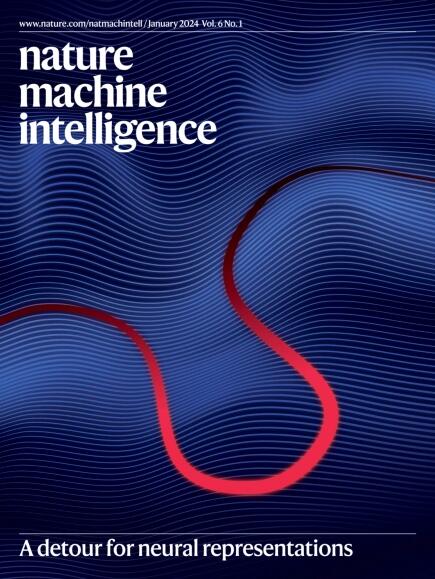深度学习预测率诱导小费
IF 23.9
1区 计算机科学
Q1 COMPUTER SCIENCE, ARTIFICIAL INTELLIGENCE
引用次数: 0
摘要
暴露于变化的强迫值下的非线性动力系统可以在不同的状态之间表现出灾难性的转变。临界减速现象可以帮助预测由分岔引起的这种转变,如果强迫的变化与系统内部时间标度相比是缓慢的。然而,在许多现实世界的情况下,这些假设不满足,并且由于强迫超过临界速率而可能触发转换。例如,与极地冰盖或大西洋经向翻转环流等地球系统关键组成部分的内部时间尺度相比,人为气候变化的快速步伐构成了由速率引起的临界点的重大风险。此外,随机扰动可能导致一些轨迹越过不稳定的边界,而另一些轨迹则不会,即使在相同的强迫下也是如此。基于临界减速的指标通常不能区分噪声引起的倾转和非倾转。这严重限制了我们评估引爆风险和预测个体轨迹的能力。为了解决这个问题,我们首次尝试开发一个深度学习框架,在速率诱导的转换之前预测动态系统的转换概率。我们的方法可以发出早期预警,正如在三个受时变平衡漂移和噪声扰动的速率诱导引爆的原型系统中所证明的那样。利用可解释的人工智能方法,我们的框架捕获指纹,以便及早发现由费率引起的小费,即使交货时间很长。我们的研究结果证明了速率诱导和噪声诱导的倾倾性的可预测性,提高了我们为更广泛的动力系统确定安全操作空间的能力。本文章由计算机程序翻译,如有差异,请以英文原文为准。


Deep learning for predicting rate-induced tipping
Nonlinear dynamical systems exposed to changing forcing values can exhibit catastrophic transitions between distinct states. The phenomenon of critical slowing down can help anticipate such transitions if caused by a bifurcation and if the change in forcing is slow compared with the system’s internal timescale. However, in many real-world situations, these assumptions are not met and transitions can be triggered because the forcing exceeds a critical rate. For instance, the rapid pace of anthropogenic climate change compared with the internal timescales of key Earth system components, like polar ice sheets or the Atlantic Meridional Overturning Circulation, poses significant risk of rate-induced tipping. Moreover, random perturbations may cause some trajectories to cross an unstable boundary whereas others do not—even under the same forcing. Critical-slowing-down-based indicators generally cannot distinguish these cases of noise-induced tipping from no tipping. This severely limits our ability to assess the tipping risks and to predict individual trajectories. To address this, we make the first attempt to develop a deep learning framework predicting the transition probabilities of dynamical systems ahead of rate-induced transitions. Our method issues early warnings, as demonstrated on three prototypical systems for rate-induced tipping subjected to time-varying equilibrium drift and noise perturbations. Exploiting explainable artificial intelligence methods, our framework captures the fingerprints for the early detection of rate-induced tipping, even with long lead times. Our findings demonstrate the predictability of rate-induced and noise-induced tipping, advancing our ability to determine safe operating spaces for a broader class of dynamical systems than possible so far. Rate- and noise-induced transitions pose key tipping risks for ecosystems and climate subsystems, yet no predictive theory existed before. This study introduces deep learning as an effective prediction tool for these tipping events.
求助全文
通过发布文献求助,成功后即可免费获取论文全文。
去求助
来源期刊

Nature Machine Intelligence
Multiple-
CiteScore
36.90
自引率
2.10%
发文量
127
期刊介绍:
Nature Machine Intelligence is a distinguished publication that presents original research and reviews on various topics in machine learning, robotics, and AI. Our focus extends beyond these fields, exploring their profound impact on other scientific disciplines, as well as societal and industrial aspects. We recognize limitless possibilities wherein machine intelligence can augment human capabilities and knowledge in domains like scientific exploration, healthcare, medical diagnostics, and the creation of safe and sustainable cities, transportation, and agriculture. Simultaneously, we acknowledge the emergence of ethical, social, and legal concerns due to the rapid pace of advancements.
To foster interdisciplinary discussions on these far-reaching implications, Nature Machine Intelligence serves as a platform for dialogue facilitated through Comments, News Features, News & Views articles, and Correspondence. Our goal is to encourage a comprehensive examination of these subjects.
Similar to all Nature-branded journals, Nature Machine Intelligence operates under the guidance of a team of skilled editors. We adhere to a fair and rigorous peer-review process, ensuring high standards of copy-editing and production, swift publication, and editorial independence.
 求助内容:
求助内容: 应助结果提醒方式:
应助结果提醒方式:


